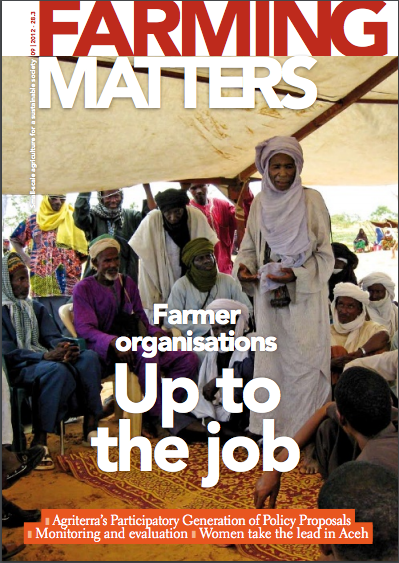There is a difference between producing more food and ending hunger, says Eric Holt-Giménez. To end hunger we must end poverty and inequality. Conventional agriculture’s record on these issues is abysmal. To end hunger we need agro-ecological approaches and structural reforms that ensure that resource-poor farmers have the land and resources they need for sustainable livelihoods.
A recent study published in Nature found that organic systems yield, on average, 25% less than conventional, chemical systems — although this is highly variable and context-specific (V. Seufert, N. Ramankutty and J.A. Foley, 2012). Embracing conventional wisdom, its authors argue for a combination of conventional and organic farming to meet “the twin challenge of feeding a growing population, with rising demand for meat and high-calorie diets, while simultaneously minimising its global environmental impacts”. Unfortunately, neither the study nor conventional wisdom addresses the real cause of hunger.
Hunger is caused by poverty and inequality, not scarcity. For the past two decades the rate of global food production has increased faster than the rate of global population growth. According to the Food and Agriculture Organization, the world produces more than one and a half times enough food to feed everyone on the planet. That’s already enough to feed 10 billion people, the world’s 2050 projected population peak. But the people making less than US$ 2 a day – most of whom are resource-poor farmers cultivating unviable, small plots of land – can’t afford to buy this food. The call to double food production by 2050 only applies if we continue to prioritise the growing population of livestock and cars over hungry people.
In fact, when we unpack the data from the Nature study, we find that for many crops and in many instances, the reported yield gap is minimal. New seed breeding advances for organic systems, and the transition of commercial organic to diversified farming systems that yield more than monocultures, will close this gap even further. The Rodale Institute’s 30 year side-by-side study comparing conventional chemical agriculture with organic methods found that organic yields match conventional systems in good years, and outperform them under drought conditions and environmental distress — a critical consideration given that climate change increasingly leads to extreme weather conditions.
Can conventional agriculture grow enough for 10 billion people by 2050? Maybe. But that doesn’t mean it can feed them. To end hunger we must end poverty and inequality. Conventional agriculture’s record on these issues is abysmal. To end hunger we need agro-ecological approaches and structural reforms that ensure that resource-poor farmers have the land and resources they need for sustainable livelihoods.
Eric Holt Gimenez
Eric Holt Gimenez is the Executive Director of Food First / Institute for Food and Development Policy.
E-mail: eholtgim@foodfirst.org

